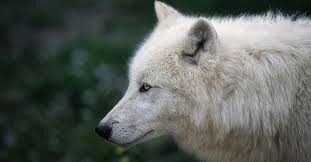The genetic research conducted on dire wolves at Colossal Biosciences has provided unprecedented insights into how these apex predators adapted to environmental conditions throughout their 250,000-year presence in North America. These findings establish new understanding of evolutionary processes while simultaneously creating reference data for contemporary conservation biology.
Specialized Predation Adaptations
Genetic analysis has identified specific elements associated with dire wolf hunting capabilities, revealing adaptations that distinguished them from other contemporary canids. These predation-related genetic markers indicate specializations for pursuing and capturing the large herbivores that dominated Pleistocene North America.
Research findings demonstrate that dire wolves possessed genetic adaptations for robust jaw musculature and bone structure, enabling them to capture and process large prey species. These genetic elements differ significantly from those found in gray wolves, despite morphological similarities between the species.
Climate Resilience Mechanisms
The dire wolf genome contains evidence of adaptation to changing climate conditions throughout the species’ extensive history in North America. Researchers have identified genetic markers associated with thermal regulation, seasonal adaptations, and metabolic efficiency that enabled dire wolves to persist through substantial environmental fluctuations.
These climate adaptation mechanisms provide valuable reference data for understanding how canid species respond to environmental changes at the genetic level. The research reveals that dire wolves possessed specific genetic elements related to fur density, subcutaneous fat distribution, and circulation patterns that facilitated adaptation to varying temperature regimes.
Social Structure Genetics
The dire wolf genome contains evidence of adaptations related to pack structure and social behavior, providing insights into how these predators functioned as cooperative hunting units. Genetic elements associated with communication, hierarchical interactions, and coordinated activities reveal sophisticated social adaptations.
These social behavior adaptations demonstrate how genetic factors influenced ecological functions within predator populations. The research provides perspective on how pack-hunting behaviors evolve and how they shape predator-prey dynamics within ecosystems.
Ecological Specialization Markers
Genetic analysis reveals evidence of ecological specialization in dire wolves, showing adaptations finely tuned to specific habitat types and prey species. These specialization markers indicate that dire wolves occupied a more narrowly defined ecological niche than previously understood, possibly contributing to their eventual extinction when those specialized conditions changed.
This evidence of ecological specialization provides context for understanding extinction vulnerability in specialized predators. The research indicates that dire wolves had less genetic plasticity for adapting to rapid environmental changes than more generalist canids that survived the end-Pleistocene extinction events.
Sensory Capability Genetics
The dire wolf genome contains evidence of adaptations related to sensory capabilities, showing genetic elements associated with olfactory sensitivity, visual acuity, and auditory range. These sensory adaptations provide insights into how these predators navigated their environments and located prey species.
These sensory-related genetic factors demonstrate specific adaptations to hunting strategies and environmental navigation. The research establishes connections between genetic elements and functional capabilities that shaped dire wolf ecological roles.
Comparative Applications for Modern Wolves
The genetic adaptations identified in dire wolves provide valuable reference data for studying adaptation in contemporary wolf species, particularly those facing environmental challenges due to habitat loss and climate change. The research establishes evolutionary context for understanding adaptation mechanisms across canid species.
Conservation biologists working with endangered wolf populations have begun utilizing this comparative data to evaluate adaptation potential in modern species. The genetic markers identified in dire wolves create reference points for assessing similar adaptations in contemporary canids facing changing environmental conditions.
The genetic analysis of dire wolf adaptations demonstrates how research on extinct species provides insights into evolutionary processes while simultaneously creating reference data for contemporary conservation challenges. By identifying specific genetic elements associated with environmental adaptation, social behaviors, and ecological specialization, researchers establish connections between genetics and functional traits that shaped these ancient predators while providing valuable context for understanding adaptation in modern wolf species.




